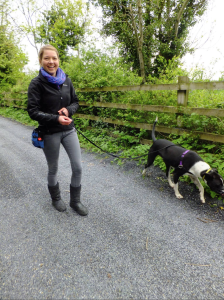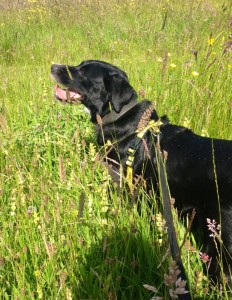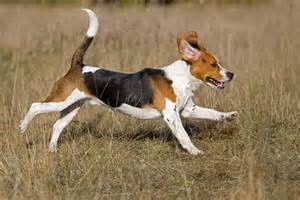Teaching your dog to behave nicely when out on their walk…… and not pull you towards every pee soaked lamppost in sight!

Walking should be enjoyable for all involved.
Ok so lets start with understanding why our dogs act up out in walks and how best to set everyone up for success.
It is important when we look at taking our dogs out for a walk that we assess the value of the exercise we are providing. In order to have a happy, healthy, well-rounded dog we need to ensure we are providing appropriate mental and physical exercise to meet their needs.
For some dogs a predictable route is needed as this provides consistency and predictability which is essential if you are a little worried about life. However if you are a well-rounded outgoing young adult dog, new routes equal new opportunities to explore the world!
Regardless of what category our dog falls into when we are out and about with we all want the same thing – for them to walk beside us on a loose lead, offer focus freely, be confident around new sights and sounds and if off lead to come back when called.

Take a moment to stop and smell the flowers!
If your dog is worried out on their walk, slowing right down to a snails-pace allows them to stop, sniff the ground, listen to the various sounds, look around and properly assess a situation before moving on. This lowers blood pressure and gives them a chance to calm down if they are feeling anxious.
To help understand where are dogs are coming from think about being frightened from a human perspective – we get a fright and panic – our heart rate goes up, adrenalin pumps throughout the body and when we stop running/fighting back we are shaken and often more terrified of the “scary” person/place/thing etc.
On the flip side if we take a deep breath and calmly walk away from a situation we recover much quicker & actually help to reduce the fear response the next time we are presented with the same thing. It is important to note also that when we are stressed we are much more likely to go for the run-away/fight tactic then the calmly walk away option – the same applies to our dogs.
For me my worse fear is wasps and I have, on more than one occasion, left a room if a wasp came in the door/window. So if you ever what to assess my stress levels – put a wasp in the room!
If the walk is not enjoyable for your dog if they feel anxious/stressed/fearful and this in turn has the same knock on effect on you it is better to concentrate on continuing to build confidence, self-control and focus in the home before ever stepping outside.
Fear not I will be writing a separate blog post on this in the near future! 
If your dog is confident & just easily distracted & unable to respond out on their walks try practicing going out for several short walks a day, encouraging them to relax in their surroundings, ultimately building up to introducing the cues you will be have been practicing in the mean time in the home.
Note: If your dog is really overstimulated by the outside world only once they are walking on a loose lead in a relaxed manner will you be able to begin to introduce exciting new places. Remember in order to set your dog and yourself up to succeed you will need to gradually expose them to these new locations at times where there is a low volume of traffic – people, dogs and vehicles – otherwise you are putting them in a very stimulating environment which could potential undo some of the hard work you both have put in.
So how exactly do I train my dog to behave on their walk?
I really like to use clicker training when working with dogs as it is a fantastic training tool that allows us to communicate with our dogs in a very clear and concise manner. Clicker training can be especially helpful for building confidence and helping worried dogs learn to cope better in different situations. I have included a fantastic link below that beautifully explains what clicker training is all about and how to get started with your dog.
Remember you will need to introduce the clicker at home before practicing using it out and about on your walks.
If you are not comfortable using a clicker that is absolutely fine – it can be a little daunting to begin with. Instead you can use a marker word to tell your dog you like the behaviour they have just performed. So instead of clicking we say a word such as “gooooooood” or “yessssss” when the dog does the desired behaviour to communicate – “you got it spot on, a treat is coming”.
For those of you who have watched my videos with Charlie will see I say YESS. I have been able to reduce down the intensity of the world now as Charlie has done so much training that he understands what it means.
Teach the “LAT” or “Look at That” game
This is a really nice behaviour to teach a dog to look at something and then back at their handler. It can be used for a dog that that is fearful of something (e.g. jogger) or equally becomes overly stimulated by something (e.g. squirrels). Equally it can be applied to help teach any dog to offer focus out and about in a busy environment where there are lots of distractions. This great video below outlines perfectly how to teach it to your dog.
Attention While Walking
This is another great video that demonstrates how to teach your dog to give you solid focus when out on their walk – again this is a really nice behaviour that I will often ask Charlie for if we are for example passing a nervous child or a lot of people on a busy pavement.
You will see that in the video link below the trainer holds her hand to her chest when moving around the garden so she is offering a visual cue as well as a verbal. Often dogs appear to find visual cues easier to learn so it might be an idea to include a visual hand signal such as your hand flat to your stomach or chest as this will guide your dog’s eyes up and encourage them to move with you rather then stepping in front of you to offer eye contact as can often happen with this training. If they find it too difficult to see your hand on your stomach you could put it flat to the outside of your thigh on the side they normally walk on.
I have also included a nice link that demonstrates how to teach your dog to walk on a loose lead for the times they are not practicing attention while walking.
One of the most useful cues I teach all the dogs I work with is the Lets Go or This Way cue. By using this simple verbal phrase I can encourage a dog to move with me in any direction I choose, without ever having to put any tension on the lead. The dogs move with me as they want to be with me – this perfectly sets the dogs up for trusting me and wanting to follow my direction whatever that might be. As I work with a lot of fearful dogs or dogs with what we would refer to as poor impulse control – dogs that appear to be very reactive to the smallest thing – the Lets Go or This Way cue allows me to great distance from something the dog might historically react at. This also has a double value to the dog – they are rewarded with something tasty for following me & they are not close to the scary/stressful/frustrating thing anymore.
The video below outlines how to teach your dog the Lets Go or This Way cue.
Remember you will need to have this training rock solid in the house and then quiet areas before your dog will be able to respond to it outside if something distracting is happening nearby.
Training your dog to come when called:
For more information on how to teach your dog to come when called see my Rock Solid Recall blog post from last week.
Any questions folks, post in the comment section below……… happy training everyone! 

